Word! The Language Column
A Haibun or the Heartbreak of Things

During his trip to Japan, Jan Snela gets to know not only some fascinating spots, but also some special literary forms. This instalment of his language column is about the appeal of “haiku pillows” and “fluffy” haibun.
By Jan Snela
“A haibun.” “A what?” “A haibun.” How many times I’ve had to define this literary genre lately! A West-Eastern divan replete with cigarette and beer stains. Nerdy lectures punctuated with long-drawn-out “okaays”. As if I were lecturing on orchids or pitching the peculiar characteristics of the lettuce slug Elysia Marginata to booming party music. But if you ask a guy a question...
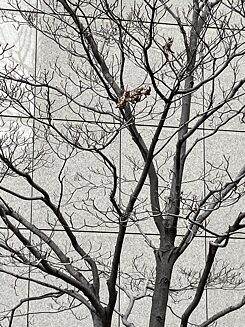 Places worth celebrating in song – Tokyo
| Photo: Jan Snela
Take the nurse anaesthetist just a moment ago in hospital where I am right now. She has a sharp tongue /but a heart of gold. She makes a little bit on death angel, but the cannula she puts me only for the friendly poison. “A writer? Well then, now you’ve got a story to tell!” Whilst prepping me for the operation like a cow to be put down by a vet, she asks me what I’m writing right now. “Oh! A haibun!” Exactly. A haibun – and here, at long last, is the explanation – is a really short, ultra-dense and yet fluffy piece of writing by a haiku poet. A haiku, in turn, is a very short Japanese poem. “Do you know Bashō?” The trainee nurse in the recovery room shakes his head. “Would you hand me my iPad, please? I’ve got work to do.” So here we go.
Places worth celebrating in song – Tokyo
| Photo: Jan Snela
Take the nurse anaesthetist just a moment ago in hospital where I am right now. She has a sharp tongue /but a heart of gold. She makes a little bit on death angel, but the cannula she puts me only for the friendly poison. “A writer? Well then, now you’ve got a story to tell!” Whilst prepping me for the operation like a cow to be put down by a vet, she asks me what I’m writing right now. “Oh! A haibun!” Exactly. A haibun – and here, at long last, is the explanation – is a really short, ultra-dense and yet fluffy piece of writing by a haiku poet. A haiku, in turn, is a very short Japanese poem. “Do you know Bashō?” The trainee nurse in the recovery room shakes his head. “Would you hand me my iPad, please? I’ve got work to do.” So here we go.
Bashō’s poetic travelogue
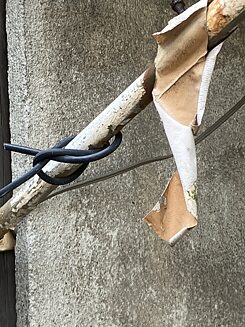 Places worth celebrating in song – Nara
| Photo: Jan Snela
Last time around, I mentioned that I wasn’t travelling down the “narrow road to the deep north” with my oversized and overloaded suitcase on my trip to Japan. But I didn’t mention that this was the adventures promising title (奥の細道 – Oku no Hosomichi) of a collection of haibun by Bashō. (Once again, haibun = dense, fluffy prose by a haiku poet. But you already know that!)
Places worth celebrating in song – Nara
| Photo: Jan Snela
Last time around, I mentioned that I wasn’t travelling down the “narrow road to the deep north” with my oversized and overloaded suitcase on my trip to Japan. But I didn’t mention that this was the adventures promising title (奥の細道 – Oku no Hosomichi) of a collection of haibun by Bashō. (Once again, haibun = dense, fluffy prose by a haiku poet. But you already know that!)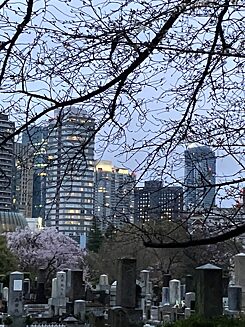 Places worth celebrating in song – Aoyama cemetary
| Photo: Jan Snela
In this travel diary, the “father of haiku” recounts his journeys to various “haiku pillows” – places worth celebrating in song. Either because others (Saigyō et al.) had already sung their praises or because there, if I remember correctly, a demoness had to metamorphose into a weeping stone for the sake of mythology. In his various haibun, Bashō describes his peregrinations with his haiku poet friend Sora. And their brief sojourns in one place after another. A haiku concludes each resonantly succinct haibun, rather like the pearl ultimately produced by an oyster. To the beat of the tides between silence and words. Bashō endowed haiku with a sense of the fleeting moment that has endured through the centuries of its existence as a poetic form. A sense of the transient nature and – owing to this transience – of the “heartbreak of things” (物の哀れ– mono no aware). He also endowed haiku with humour.
Places worth celebrating in song – Aoyama cemetary
| Photo: Jan Snela
In this travel diary, the “father of haiku” recounts his journeys to various “haiku pillows” – places worth celebrating in song. Either because others (Saigyō et al.) had already sung their praises or because there, if I remember correctly, a demoness had to metamorphose into a weeping stone for the sake of mythology. In his various haibun, Bashō describes his peregrinations with his haiku poet friend Sora. And their brief sojourns in one place after another. A haiku concludes each resonantly succinct haibun, rather like the pearl ultimately produced by an oyster. To the beat of the tides between silence and words. Bashō endowed haiku with a sense of the fleeting moment that has endured through the centuries of its existence as a poetic form. A sense of the transient nature and – owing to this transience – of the “heartbreak of things” (物の哀れ– mono no aware). He also endowed haiku with humour.
Paeans to special places
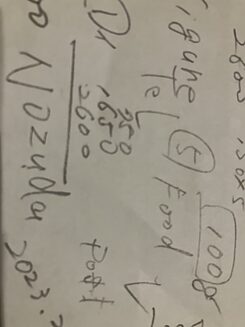 Post office notes
| Photo: Jan Snela
I found my “haiku pillows”, the places that cried out for descripiton, amid the maze of Tokyo. At the post office by Shimbashi Station, where I had to send a registered letter. Fascinating: all the translation gadgets there as well as the conspicuous gender hierarchy, with a row of female clerks bustling about in front and a row of men sitting at desks behind them to be consulted on any questions that might come up
Post office notes
| Photo: Jan Snela
I found my “haiku pillows”, the places that cried out for descripiton, amid the maze of Tokyo. At the post office by Shimbashi Station, where I had to send a registered letter. Fascinating: all the translation gadgets there as well as the conspicuous gender hierarchy, with a row of female clerks bustling about in front and a row of men sitting at desks behind them to be consulted on any questions that might come up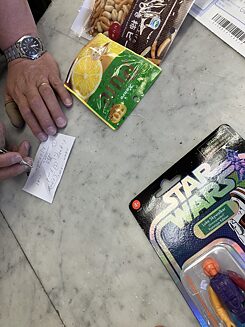 Star Wars dolls and crackers
| Photo: Jan Snela
And enlightening: the refutation of this congealed impression at another post office, where a kindly elderly gentleman spent an hour and a half (!) helping me, without the slightest grumbling or complaint, ship a few bags of crackers and two Star Wars dolls I’d picked up in Daikanyamachō, the hipster part of town (most Japanese websites have a button to switch to the English version, but often as not it just slings you right back to the Japanese kanji and kana scripts flickering mercilessly on your screen).
Star Wars dolls and crackers
| Photo: Jan Snela
And enlightening: the refutation of this congealed impression at another post office, where a kindly elderly gentleman spent an hour and a half (!) helping me, without the slightest grumbling or complaint, ship a few bags of crackers and two Star Wars dolls I’d picked up in Daikanyamachō, the hipster part of town (most Japanese websites have a button to switch to the English version, but often as not it just slings you right back to the Japanese kanji and kana scripts flickering mercilessly on your screen).I found my “haiku pillows” even at tourist hotspots like the observation deck on the 45th floor of Shinjuku city hall and the cemetery in Aoyama. Over a bowl of rather suspicious-looking innards from a soup kitchen astonishing me with its delicately juicy prices: I was their only European guest.
From Kyoto to a hospital room
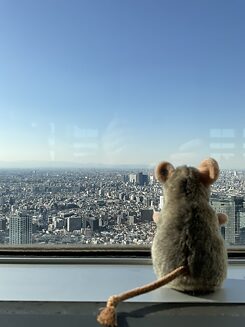 Viewing platform of Shinyoku City Hall
| Photo: Jan Snela
I ended up travelling too. Not on “narrow roads” like Bashō to the backwoods of the deep north. But with a heavy suitcase to San’un Zendo, the headquarters of the Sanbô-Zen school in Kamakura. To Nara, a small city that’s as sumptuous as it is dilapidated. To Junya and Kumiko in Kochi Prefecture. To Kyoto, of course, with its kimono kids and sakura – Japanese cherry blossoms galore. And to Hiroshima’s breaking heart.
Viewing platform of Shinyoku City Hall
| Photo: Jan Snela
I ended up travelling too. Not on “narrow roads” like Bashō to the backwoods of the deep north. But with a heavy suitcase to San’un Zendo, the headquarters of the Sanbô-Zen school in Kamakura. To Nara, a small city that’s as sumptuous as it is dilapidated. To Junya and Kumiko in Kochi Prefecture. To Kyoto, of course, with its kimono kids and sakura – Japanese cherry blossoms galore. And to Hiroshima’s breaking heart.Much to tell. But over here where they’ve rolled me to Room 30 in Ward 4B, it’s dinnertime now. The trainee nurse brings me some bread and cheese. Both seem somehow heartbreaking. Oh, how tasty the tea is!
Word! The Language Column
Our column “Word!” appears every two weeks. It is dedicated to language – as a cultural and social phenomenon. How does language develop, what attitude do authors have towards “their” language, how does language shape a society? – Changing columnists – people with a professional or other connection to language – follow their personal topics for six consecutive issues.